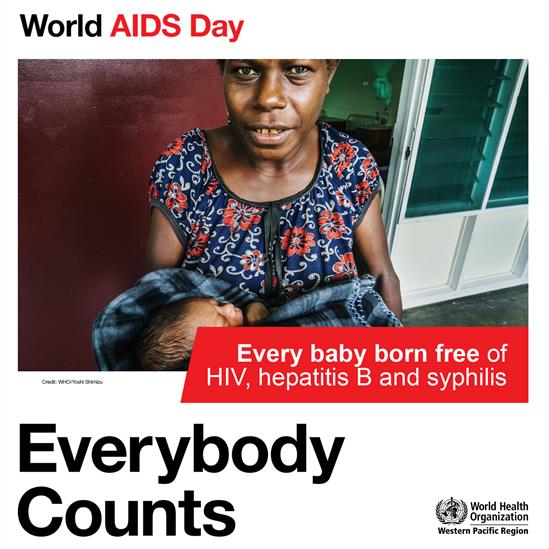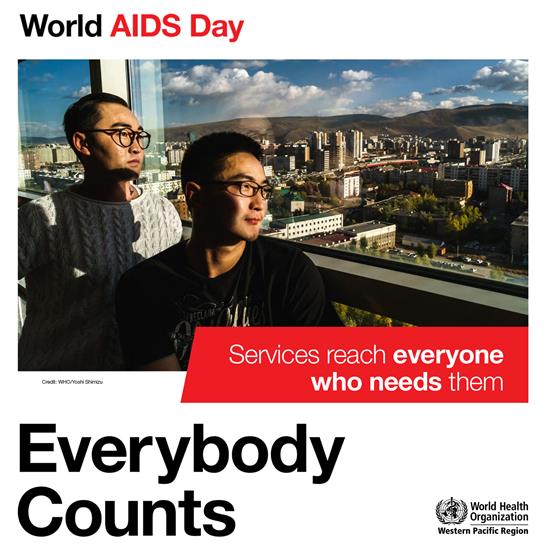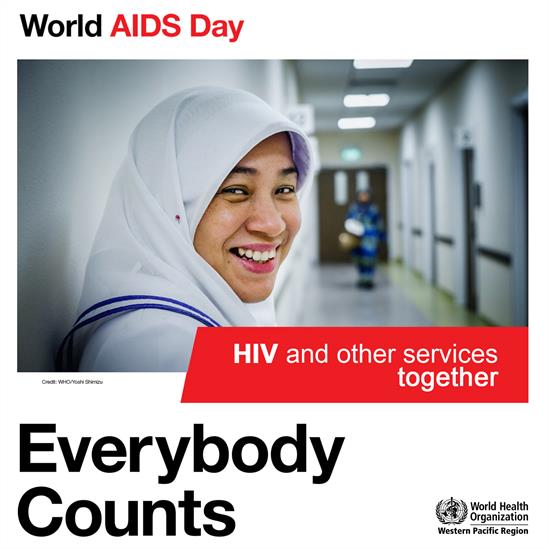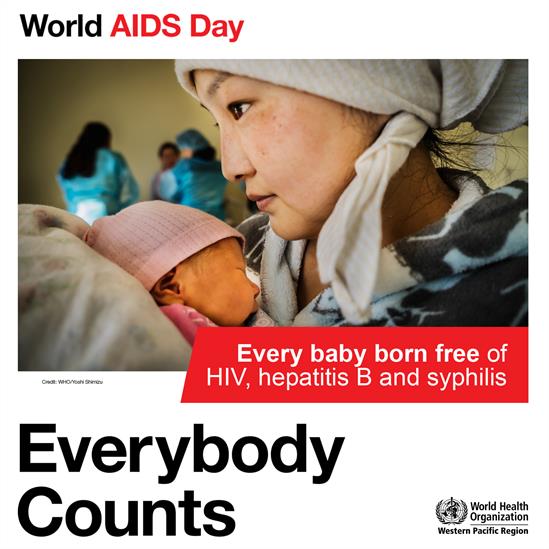HIV/AIDS
The Human Immunodeficiency Virus (HIV) targets the immune system and weakens people's defence systems. This makes it easier to get sick with diseases like tuberculosis and other infections. Acquired immunodeficiency syndrome (AIDS) occurs at the most advanced stage of HIV infection and is characterized by the occurrence of more than 20 life-threatening opportunistic infections or cancers.
HIV is spread from the body fluid of a person living with HIV, including blood, breast milk, semen and vaginal fluids. It is not spread by kisses, hugs or sharing food. It can also spread from a mother living with HIV to her baby during pregnancy, childbirth, and breastfeeding.
HIV transmission can be effectively prevented with appropriate antiretroviral therapy (ART). People living with HIV who take ART and maintain an undetectable viral load do not transmit the virus to their sexual partners. With effective treatment and care, they can lead healthy, long, and fulfilling lives.
Key populations and their partners face higher risks of HIV infection. This includes men who have sex with men, transgender, sex workers, people who inject drugs, and people in prisons. In the Western Pacific Region, they account for the vast majority of new infections.
In 2024, an estimated 3.0 million people were living with HIV in the Western Pacific Region. Of the 3.0 million, 78% knew their status, 69% were receiving HIV treatment and 67% had suppressed viral loads. An estimated 160 000 [150,000–180 000] people newly acquired HIV, and 83 000 deaths were attributed to HIV-related causes.
With notable progress in the response to HIV in the Western Pacific region, new HIV infections have declined by 11%, and deaths related to HIV/AIDS by 9% since 2010. However, these reductions fall short of the global and regional target to reduce new infections and deaths related to HIV/AIDS by 90% and end the HIV/AIDS epidemic by 2030 as the sustainable development goal. The mother-to-child transmission rate of HIV in our region is reported at 26%, compared with a global average of 10%. Notably, only 35% of children with HIV are receiving treatment, which is lower than the treatment rate for all people living with HIV. These figures highlight the urgent need to enhance efforts to prevent new HIV infections and reduce deaths in the Western Pacific Region.
HIV is preventable. Prevention interventions include condoms and lubricant, harm reduction (including needle/syringe programmes and opioid agonist maintenance therapy), pre-exposure prophylaxis (PrEP; taking antiretrovirals before exposure to HIV) and post-exposure prophylaxis (PEP; taking antiretrovirals after exposure to HIV).
PrEP is a highly effective and safe HIV prevention option. WHO currently recommends multiple PrEP products: oral PrEP containing tenofovir, the dapivirine vaginal ring (DVR), long acting injectable cabotegravir (CAB-LA) and the new recommendation of injectable lenacapavir (LEN). Different products may be appropriate for different people depending on their circumstances and preferences. LEN for example is a twice-yearly injectable PrEP that provides HIV protection—ideal for those facing challenges with daily pills or healthcare access.
Unlike HIV treatment, PrEP is not lifelong and can be started and stopped to correspond with times someone may be exposed to HIV. PrEP should be offered alongside other HIV prevention options, including condoms and lubricant and harm reduction services.
The risk of a pregnant women living with HIV transmitting the virus to her baby is between 15 and 45% without any intervention. However, identifying pregnant women living with HIV early and initiating and sustaining lifelong treatment for all women and girls of childbearing age living with HIV, can prevent transmitting the virus to their babies.
Importantly, people who are successfully treated for HIV and have undetectable viral load, cannot pass the virus to their sexual partners.
Within HIV prevention programmes, WHO supports the integration of hepatitis and sexually transmitted infection prevention, testing and treatment and the inclusion of services which address the sexual and reproductive health and mental health issues, that are also critical to acceptable and effective programming.
HIV is treated with antiretroviral therapy (ART) consisting of one or more medicines. ART does not cure HIV but reduces its replication in the blood, thereby reducing the viral load to an undetectable level.
Effective ART prevents HIV transmission from mother to child during pregnancy, delivery and breastfeeding. Someone who is on antiretroviral therapy and virally suppressed will not pass HIV to their sexual partners.
WHO recommends that all people who have HIV should receive HIV treatment as early as possible. This means that people need to know they have HIV and have access to HIV diagnostic services. In many countries, HIV self-tests are available so that people can test themselves for HIV.
Antiretroviral therapy (ART) is a lifelong treatment that must be taken daily. Over time, ART regimens have become simpler and more convenient. According to the latest WHO guidance, dual therapy and long-acting injectable antiretrovirals are recommended options for individuals with an undetectable viral load who are not co-infected with hepatitis B.
People can continue with safe and effective ART if they adhere to their treatment. In cases when ART becomes ineffective - HIV drug resistance - due to reasons such as lost contact with health care providers and drug stock-outs, people will need to switch to other medicines to protect their health. ART enables people living with HIV to lead healthy, productive lives.









